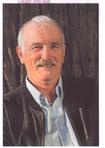John Michael McCarty's Blog, page 12
January 11, 2017
Sam Sirdofsky
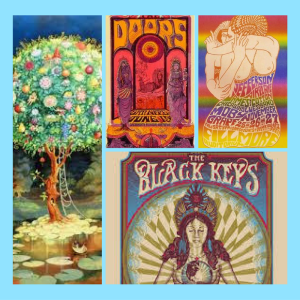 Sam Sirdofsky is eighty-four years old and still defying gravity. She is flying high, working hard at her craft while displaying her talents at several different locations including the Russian River Art Gallery in Guerneville along the Russian River. Sam was born in Berkeley and holds a BA and an MA in visual arts and art history from the California College of the Arts and the San Francisco Academy of Art. A long career in illustration placed her work in major periodicals, animated commercials and fun projects such as rock posters (The Doors, Jefferson Airplane, The Black Keys) and children’s books.
Sam Sirdofsky is eighty-four years old and still defying gravity. She is flying high, working hard at her craft while displaying her talents at several different locations including the Russian River Art Gallery in Guerneville along the Russian River. Sam was born in Berkeley and holds a BA and an MA in visual arts and art history from the California College of the Arts and the San Francisco Academy of Art. A long career in illustration placed her work in major periodicals, animated commercials and fun projects such as rock posters (The Doors, Jefferson Airplane, The Black Keys) and children’s books.
Sam Sirdofsky’s giclee at the far left recently sold for $40k and is typical of her whimsical spirit. Her warmth and humor is visible in her work, translating into some great fun. The Russian River Valley is blessed with so many wonderful artists. Check Sam out at the R.R. Art Gallery.
The post Sam Sirdofsky appeared first on John McCarty.
January 8, 2017
The Oakland Raiders in Santa Rosa
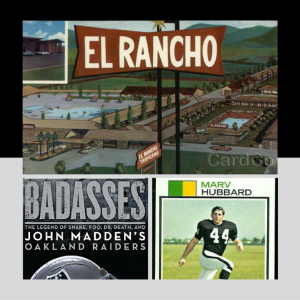 The Oakland Raiders started to train in Santa Rosa in 1963 at the El Rancho Tropicana Hotel, which was on the site where the Costco gas pumps are today at the S.R. Marketplace on Santa Rosa Ave. I can remember John Madden doing bed-check at 11pm, visiting each player’s room, tucking them in for the night. About an hour later you would sometimes see pretty young women moving the players’ cars out of the parking lot. Kenny Stabler’s Lincoln Continental was usually at a different spot come morning. The Snake remembers there were other incidents when the ladies would pick you up in their autos. Date time was set at 11:30pm. On those occasions, the Snake would crawl through a row of bushes only to see 15 other Raiders waiting for their rides on the other side.
The Oakland Raiders started to train in Santa Rosa in 1963 at the El Rancho Tropicana Hotel, which was on the site where the Costco gas pumps are today at the S.R. Marketplace on Santa Rosa Ave. I can remember John Madden doing bed-check at 11pm, visiting each player’s room, tucking them in for the night. About an hour later you would sometimes see pretty young women moving the players’ cars out of the parking lot. Kenny Stabler’s Lincoln Continental was usually at a different spot come morning. The Snake remembers there were other incidents when the ladies would pick you up in their autos. Date time was set at 11:30pm. On those occasions, the Snake would crawl through a row of bushes only to see 15 other Raiders waiting for their rides on the other side.
The night usually started by visiting 5 different bars. The Music Box is where the prettiest ladies hung out. Melendy’s was the nearest & most frequented.
Oakland Raiders in Santa Rosa:
As players, the Oakland Raiders had to break up the monotony of training camp in Santa Rosa. You can’t blame them for that. Also, they embraced their Bad-Boy image. So much so that the furniture at one of the saloons would be stored in the back. This was because of the fights that would usually accompany women-chasing and drinking. One night Marv Hubbard, a block of a player at six-two & 240 pounds, rode his precious Harley to the saloon. After settling in at the bar, Marv noticed two Hells Angels sitting on his bike. Marv approached and an argument ensued. Punches were thrown. Marv clocked them both. The bikers rose, dusted off their club patches and entered the saloon with their new drinking partner.
The post The Oakland Raiders in Santa Rosa appeared first on John McCarty.
January 5, 2017
Hells Angels in Jenner, CA.
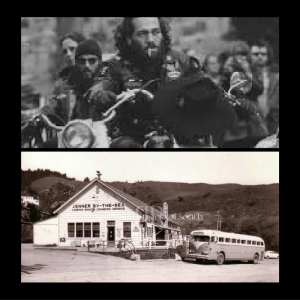 Sonny Barger and his Hells Angels thundered up Highway One along the California coast one day in the late sixties. As the story goes, they parked their Harleys in front of the Jenner Inn and entered a redwood structure, which housed the lodge office, post office, tavern, family fish house and a general store. The owner refused to serve the bikers, cradling a shotgun. Sonny stood his ground, demanding some liquor. Another refusal. An Angel ignored the response and started to circle the counter toward the whiskey rack.
Sonny Barger and his Hells Angels thundered up Highway One along the California coast one day in the late sixties. As the story goes, they parked their Harleys in front of the Jenner Inn and entered a redwood structure, which housed the lodge office, post office, tavern, family fish house and a general store. The owner refused to serve the bikers, cradling a shotgun. Sonny stood his ground, demanding some liquor. Another refusal. An Angel ignored the response and started to circle the counter toward the whiskey rack.
Without warning, shots rang out. A spray of rock salt hit the biker in the leg. He moaned and started to raise a fist when the owner said that he had called the sheriff. Sonny reeled back in his “brother” and the pack exited the store.
Outside, they were greeted by a pair of deputies. A standoff soon developed.
Hells Angels in Jenner:
Sonny Barger didn’t back down, saying that his Angels outnumbered the deputies ten-to-one. The sheriff corrected Sonny, pointing to the sun glinting off a dozen or so weapons, which were trained on the bikers from the nearby hillside. CHP cruisers and local officers escorted the gang to the Mendocino County line where another contingent of lawmen were waiting.
I’m in the midst of writing a crime novel that in part depicts the above scene. Some of the information for this blog came from the Press Democrat archives as well as the Russian River Historical Society. Any corrections, additions, etc., which you may possess, would be most welcomed. Thanks.
The post Hells Angels in Jenner, CA. appeared first on John McCarty.
December 29, 2016
Don’t Stop the Music, 1967
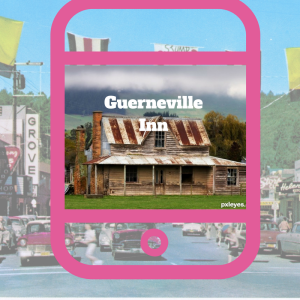 While researching for my next novel, Don’t Stop the Music, I came across this little nugget. The photo is a mock-up of the 1967 Guerneville Inn, which rested where the parking lot is today near the Coffee Bazaar. The devil was indeed at work here. According to a local old timer (let’s call him Preacher), the restaurant served Italian faire and was renowned for “cutting” corners, literally. One day the owner and his buddy went on a late night hunt. They soon returned with a cow they had shot near a rancher’s fence line. The beast was butchered and sold to make ends meat. The Preacher says that the Guerneville Inn served the best beef Parmesan on the Russian River.
While researching for my next novel, Don’t Stop the Music, I came across this little nugget. The photo is a mock-up of the 1967 Guerneville Inn, which rested where the parking lot is today near the Coffee Bazaar. The devil was indeed at work here. According to a local old timer (let’s call him Preacher), the restaurant served Italian faire and was renowned for “cutting” corners, literally. One day the owner and his buddy went on a late night hunt. They soon returned with a cow they had shot near a rancher’s fence line. The beast was butchered and sold to make ends meat. The Preacher says that the Guerneville Inn served the best beef Parmesan on the Russian River.
On another occasion, a husband comes in and spies his wife accepting a drink from a stranger. An argument ensued between the husband and stranger. The wife tries to calm the pair, saying there was plenty of her to go around.
Guerneville Inn:
The husband, however, takes exception to this and leaves. He soon returns and shoots the stranger dead. Where there is love, you’ll find Satan.
The Guerneville Inn ended its infamous run in a fireball when a propane tank ignited. A couple of suspicious looking rubes were spotted fleeing the restaurant, wearing Lyndon B. Johnson masks, moments before the explosion. The sheriff stopped a delivery van along the strip for a broken taillight. Inside were found the disguises as well as several paintings of naked ladies that were stolen from the joint. Swindlers nor thieves shall inhearite the Kingdom, so says the Preacher.
The post Don’t Stop the Music, 1967 appeared first on John McCarty.
December 22, 2016
W.W.II in San Francisco, Ch. 10
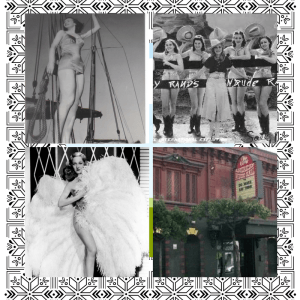 W.W. II in San Francisco took on many different faces as told through various tales. This is a continuation of one of those stories. Chapter 10: My mother was chosen a princess for the 1939 Golden Gate International Exposition held on Treasure Island. It was this “risque” publicity photo on the top left, which ran in the S.F. Chronicle, that divorced her from several family members. The experience, however, did give her the opportunity to meet film star and renowned dancer, Sally Rand, who managed “Sally Rand’s Nude Ranch” during the fair. Mom and Sally Rand would later hook up in dance classes held at Sally Stanford’s bordello on Nob Hill.
W.W. II in San Francisco took on many different faces as told through various tales. This is a continuation of one of those stories. Chapter 10: My mother was chosen a princess for the 1939 Golden Gate International Exposition held on Treasure Island. It was this “risque” publicity photo on the top left, which ran in the S.F. Chronicle, that divorced her from several family members. The experience, however, did give her the opportunity to meet film star and renowned dancer, Sally Rand, who managed “Sally Rand’s Nude Ranch” during the fair. Mom and Sally Rand would later hook up in dance classes held at Sally Stanford’s bordello on Nob Hill.
When my mother could no longer perform ballet due to the W.W.II closure of the Opera House, she took advantage of her earlier contacts and landed a job at Sally Rand’s Music Box. The theater on O’Farrell Street in the Tenderloin is still standing but under the name of the Great American Music Hall.
Sally Rand:
By the time W.W.II rolled around, Sally Rand had already received a lot of press. She had starred in the 1934 movie Bolero with George Raft and had been arrested four times in a single day at the 1933 Chicago World Fair for riding nude on a white horse down the public streets. Bad publicity was better than no publicity, right? Mom added a bit of flair and class to the burlesque scene, dressing up Sally Rand’s traditional fan dance with operatic music. She always dressed in full costume, refusing to wear a body sock to give the illusion of nudity.
Next time we’ll visit Sonoma County during W.W.II. If you want to catch up on the other nine chapters of W.W.II in the Bay Area, go to www.johnmccarty.org and click on “W.W.II” at the bottom of any page.
The post W.W.II in San Francisco, Ch. 10 appeared first on John McCarty.
December 11, 2016
W.W.II in San Francisco, Ch. 9
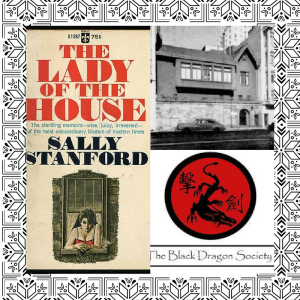 W.W.II in San Francisco took on many different faces as told thru many different tales. This is a continuation of one of those stories. Chapter 9: By the time Sally Stanford landed in the City at the ripe old age of 21, she had already done a stretch in prison for forging checks, been a bootlegger, and had run a speakeasy. She opened a couple of brothels in the Tenderloin before realizing her dream atop Nob Hill at 1144 Pine Street. It was considered the swankiest bordello in town of which Herb Caen later said: “The U.N. was founded at Stanford’s whorehouse.”
W.W.II in San Francisco took on many different faces as told thru many different tales. This is a continuation of one of those stories. Chapter 9: By the time Sally Stanford landed in the City at the ripe old age of 21, she had already done a stretch in prison for forging checks, been a bootlegger, and had run a speakeasy. She opened a couple of brothels in the Tenderloin before realizing her dream atop Nob Hill at 1144 Pine Street. It was considered the swankiest bordello in town of which Herb Caen later said: “The U.N. was founded at Stanford’s whorehouse.”
Sally Stanford was very fond of burlesque and a regular at Sally Rand’s Music Box (same building where Great America Music Hall is today on O’Farrell St. in the Tenderloin). Sally Rand rented out a portion of Miss Stanford’s Nob Hill residence for dance lessons. My mother, Anne DeGraf, took this same class. Their instructor was a Japanese man by the name of Ito.
Sally Stanford:
When the FBI raided Sally Stanford’s place, they were not there for the famous madam but rather for Mr. Ito. But he was not to be found. The Japanese man had used dancing and Stanford’s studio on Nob Hill as a front. In reality, he was believed to be a member of the Black Dragon Society who had infiltrated the West Coast to continue covert spy activities. Mr. Ito was not found and believed to have escaped back to Japan. My mother, after she lost her position as a ballerina at the Opera House due to its closure, went on to dance at the Music Box for Sally Rand.
Next time: More on Sally Stanford, Sally Rand and my mother during W.W.II. To catch up on the previous eight chapters of W.W.II in San Francisco, go to www.johnmccarty.org and click on “W.W.II” at the bottom of any page.
The post W.W.II in San Francisco, Ch. 9 appeared first on John McCarty.
November 29, 2016
W.W.II in San Francisco
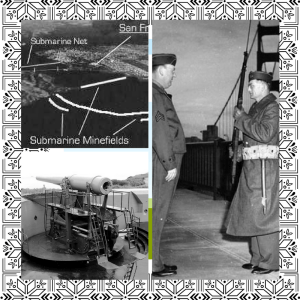 Tales of W.W.II in San Francisco have been passed down through the generations. This is a continuation of one of those stories. Chapter 8: My grandfather is pictured here posting a National Guardsman at the south end of the Golden Gate Bridge. One of his duties was to deter saboteurs. Supposedly he stopped an enemy infiltrator from dropping a grenade down the stack of the U.S.S. Hornet, which was heading out to sea with Doolittle’s Raiders. At the time it was suspected that this person was most likely a member of the Black Dragon Society, a covert Japanese spy organization.
Tales of W.W.II in San Francisco have been passed down through the generations. This is a continuation of one of those stories. Chapter 8: My grandfather is pictured here posting a National Guardsman at the south end of the Golden Gate Bridge. One of his duties was to deter saboteurs. Supposedly he stopped an enemy infiltrator from dropping a grenade down the stack of the U.S.S. Hornet, which was heading out to sea with Doolittle’s Raiders. At the time it was suspected that this person was most likely a member of the Black Dragon Society, a covert Japanese spy organization.
There was another rumor of a mini sub (which is nothing more than a hollowed out torpedo outfitted with navigational apparatus) from the Japanese I25 vessel maneuvering through the maze of minefields and past the anti-sub net to enter the
San Francisco Bay.
Protecting the Golden Gate:
Protecting the Golden Gate began with the 17 “batteries” each manned by approximately 125 men. They lived at these installations for weeks at a time. Moral suffered as they tried to maintain a high state of readiness through long periods with little to do. If the big guns failed to stop an enemy vessel, the next line of defense was 600 underwater mines. My uncle aided in the operation of the anti-submarine net, which spanned the length of the Bridge and was opened and closed by a civilian trawler as military ships were in short supply.
To catch up on the previous 7 chapters of W.W.II in San Francisco, click on W.W.II at the bottom of this page.
The post W.W.II in San Francisco appeared first on John McCarty.
November 24, 2016
W.W.II & Civil Defense along the West Coast
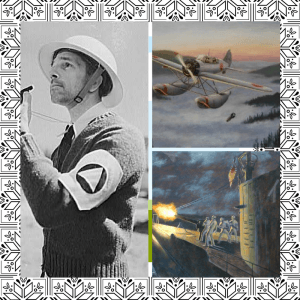 W.W.II along the West Coast put a different face on the conflict. This is a continuation of that story. Chapter 8: On Dec. 8, 1941, immediately following the attack on Pearl Harbor, Mayor Angelo Rossi of San Francisco declared a state of emergency. Civil Defense made blackout shades mandatory with block wardens patrolling neighborhoods. This inconvenience more than outweighed the fear of an impending Japanese invasion along our western shores. But don’t tell that to Jeannette Thompson who had trouble finding her way across a blackened Golden Gate Park in her white gown only to be two hours late for her own wedding.
W.W.II along the West Coast put a different face on the conflict. This is a continuation of that story. Chapter 8: On Dec. 8, 1941, immediately following the attack on Pearl Harbor, Mayor Angelo Rossi of San Francisco declared a state of emergency. Civil Defense made blackout shades mandatory with block wardens patrolling neighborhoods. This inconvenience more than outweighed the fear of an impending Japanese invasion along our western shores. But don’t tell that to Jeannette Thompson who had trouble finding her way across a blackened Golden Gate Park in her white gown only to be two hours late for her own wedding.
Santa Rosa and rural Sonoma County experienced its own blackout in early December of 1941 when the local Naval base reported that “A large number of mysterious planes were spotted flying over San Francisco before heading north…”
Civil Defense:
The Western Command received reports on Dec. 8, 1941 of enemy ships just thirty miles off the coast. Newspapers in San Francisco and Sonoma Counties published an Associated Press article that read: “An apparent attempt by Japanese warplanes to bomb the greater San Francisco bay area was reported tonight by General William Ord Ryan of the Fourth Interceptor Command who said a large number of unidentified aircraft were turned back at the Golden Gate.”
This fear (real or imagined) of an immediate attack stepped up the Civil Defense during W.W.II. In addition to block wardens, airplane spotters and coast watchers scanned the skies for trouble. Along the sand dunes of the Richmond District of San Francisco as well as Bodega and Jenner up north, two-story towers manned teenagers with their binoculars.
To catch up on the previous seven chapters of W.W.II along the West Coast, go to www.johnmccarty.org & click on “W.W.II” at the bottom of the page.
The post W.W.II & Civil Defense along the West Coast appeared first on John McCarty.
November 18, 2016
The Great Los Angeles Air Raid
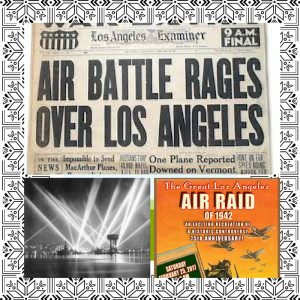 The Great Los Angeles Air Raid put a different face on W.W.II. This is a continuation of that story. Chapter 7: On Feb. 23, 1942 a Japanese submarine lofted several shells from its deck gun onto the city of Santa Barbara, initiating new fears of an all out attack along the West Coast. Two days later several citizens reported seeing a large object near the towns of Santa Monica and Culver City. Air raid sirens blew. Searchlights combed the skies. Over 1400 rounds were fired at the orange, glowing object to no apparent effect until it drifted south and out of range.
The Great Los Angeles Air Raid put a different face on W.W.II. This is a continuation of that story. Chapter 7: On Feb. 23, 1942 a Japanese submarine lofted several shells from its deck gun onto the city of Santa Barbara, initiating new fears of an all out attack along the West Coast. Two days later several citizens reported seeing a large object near the towns of Santa Monica and Culver City. Air raid sirens blew. Searchlights combed the skies. Over 1400 rounds were fired at the orange, glowing object to no apparent effect until it drifted south and out of range.
While no enemy bombs were dropped, the Battle of Los Angeles did claim six lives. Three people were killed by friendly fire while another trio suffered fatal heart attacks during the hour-long siege. A number of buildings also suffered damage from U.S. anti-aircraft guns.
Los Angeles Air Raid:
Shortly after the alarm, speculation ran rampant as to the cause of the Los Angeles Air Raid. One theory by the military was that the Japanese had a secret airfield in Mexico. Others suggested that the Japanese had developed a submersible aircraft carrier. This was later proven to be true. In fact, the enemy had eleven such vessels operating off our West Coast immediately after the attack on Pearl Harbor. Another idea was that the glowing object was in fact a UFO. Side Bar: Steven Spielberg’s movie, 1941, was loosely based on the Los Angeles Air Raid of Feb. 25, 1942.
To catch up on the other six chapters of our chronicling of W.W.II along the West Coast, go to www.johnmccarty.org and click on “Blogs”. Next we take a closer look at enemy subs inside the Golden Gate. Stay tuned!
The post The Great Los Angeles Air Raid appeared first on John McCarty.
November 10, 2016
W.W.II in San Francisco, Ch.6
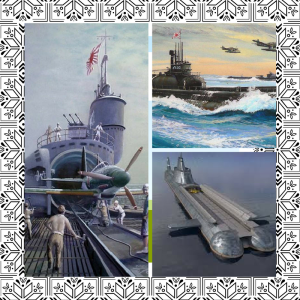 W.W.II in San Francisco took on many different descriptions and tales. This is a continuation of one of those stories. Chapter 6: The Japanese Imperial Navy during World War Two developed a secret weapon, a submersible aircraft carrier. Eventually, the sub grew to 400′ in length and double the width, capable of carrying three bombers. There were rumors that our enemy was experimenting with atomic weapons off of Korea, but a more likely scenario involves these airplanes unloading anthrax bombs on American cities. Anthrax had been thoroughly tested against China early on. This particular strategy, however, was abandoned by the Japanese high command as being too immoral (little did they know what was coming to their own shores). Also, they had witness the ineffectiveness of the German aerial bombing of London.
W.W.II in San Francisco took on many different descriptions and tales. This is a continuation of one of those stories. Chapter 6: The Japanese Imperial Navy during World War Two developed a secret weapon, a submersible aircraft carrier. Eventually, the sub grew to 400′ in length and double the width, capable of carrying three bombers. There were rumors that our enemy was experimenting with atomic weapons off of Korea, but a more likely scenario involves these airplanes unloading anthrax bombs on American cities. Anthrax had been thoroughly tested against China early on. This particular strategy, however, was abandoned by the Japanese high command as being too immoral (little did they know what was coming to their own shores). Also, they had witness the ineffectiveness of the German aerial bombing of London.
Submersible Aircraft Carriers:
Above the main deck rose a 115 foot long, 12 foot diameter, waterproof hangar housing three torpedo-bombers. These floatplanes were rolled out through a massive hydraulic door onto an 85 foot pneumatic catapult, where they were rigged for flight, fueled, armed, launched, and, after landing alongside, lifted back aboard with a powerful hydraulic crane.
The more modern version (photo lower right) would be the length of three football fields with jets capable of carrying nuclear weapons. There is an allure for such a stealth weapon, but the cost of this specialized ship would be cost prohibitive.
Next time, we will take a peek at the Los Angeles Air Raid during W.W.II.
The post W.W.II in San Francisco, Ch.6 appeared first on John McCarty.

